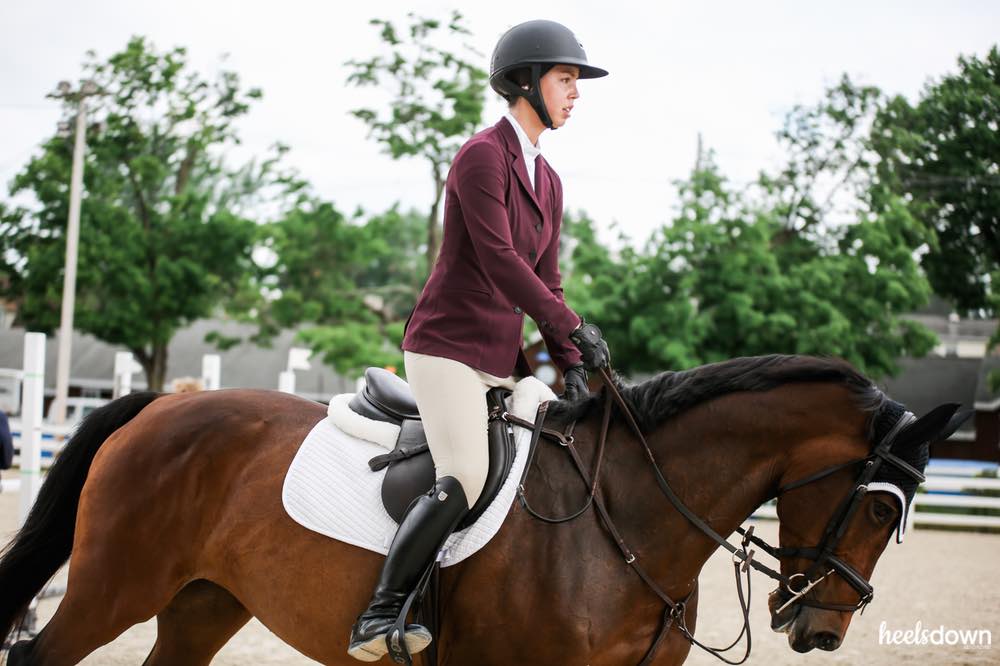Is Our Sport’s Dress Code Pricing Out Competitors?

Take a trip down the road to any local schooling show in your area. Not the one that’s tied to the USHJA’s Outreach program or has the USDF’s schooling show affiliation. I’m talking about the one ring going, cheap classes, no stalls offered, backyard schooling show.
Most of the kids there are riding horses with no show coat. If they’ve got one, it rarely fits well. It’s a hand-be-down, most likely. But the rest are in polo shirts or sun shirts, tucked into their breeches, with a belt around their waist and boots on their feet.
It might not be the look so many of us think of when we envision a “horse show.” But it’s still safe. It’s still neat.
Schooling shows are where we all get our start in the sport. It’s where we whet our appetite for competition, and where our goals and drive to get better and do more with horses often begins. For the lucky ones who are able to afford it, they graduate to rated shows, with USEF memberships and drug fees and better facilities.
The rest of us stick with the schooling shows.
With affordability being such a glaring barrier of entry to so many in equestrian sports, I’ve always wondered why our “uniform” also has to be so expensive.
“It’s that gigantic ‘T’. Tradition,” explained Mary Babick, the president of the U.S. Hunter/Jumper Association, in a recent Heels Down Mag event discussing the rising costs of horse shows. “People get so stuck on it, this formality of it. Just a couple of years ago, we spent hours arguing over whether or not you can wear a burgundy coat in the hunters.”
The cost to show is steep enough. But adding the whole ensemble required to compete can be quite daunting. As long as someone can afford a proper helmet and pair of boots, why does it matter what their pants or shirt look like?
Some disciplines are better about this than others. The United States Eventing Association, for example, amended its rules a few years ago to make polo shirts acceptable in all three phases of eventing up to Training Level, according to the organization’s president, Max Corcoran.
“You don’t need a jacket,” she said. “We made that effort about two years ago to try to cut costs back on that. Polo shirts aren’t hard to come by. You still look organized and tidy, so you can compete in that.”
What’s more important, Max said, is a helmet, but also the body protecting vest riders wear in the cross-country phase.
“I never owned my own when I competed,” Max admitted about a vest. “I always borrowed one.”
So what would it take for the sport to forego its longstanding and stubborn preference for “tradition” and to lighten up a little?
Mary looks to the evolution in tennis as a possible example.
“Look at tennis years ago, with women in their long skirts. Then they were all in white. The 70s and 80s go by and suddenly, there’s Serena and Venus,” she explained. “They completely changed the look of what is acceptable in tennis.”
Just one show jumper comes to mind, when I think of of equestrians brave enough to bend the rules when it comes to riding attire. Danielle (formerly Goldstein) Waldman rides at the grand prix level with a head full of colorful feathers in her hair. Sometimes she competes in yoga pants. Other times she wears a cop top under her coat, or a fully see-through lace jacket. She isn’t afraid to express herself when she’s riding, wear what is most comfortable for her, and to push the boundaries just a little bit in the sport.
But still, there are haters. Commentators online rage about seeing a unique flair – like flying feathers – and her pull away from “tradition.”
But if Danielle is winning in the ring, does it really matter what she’s wearing?


